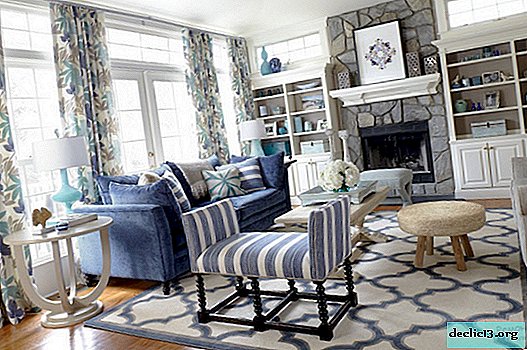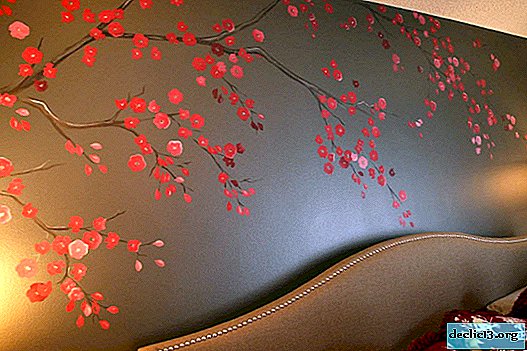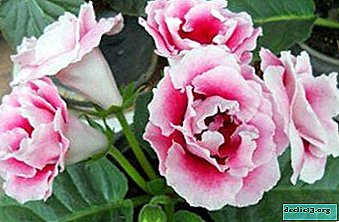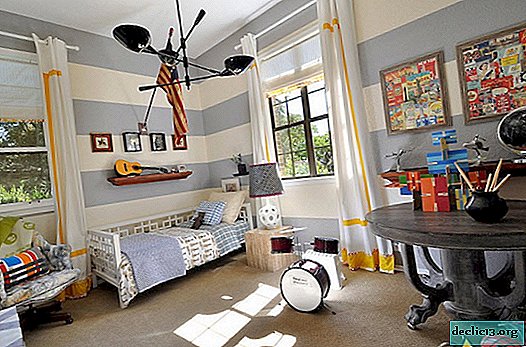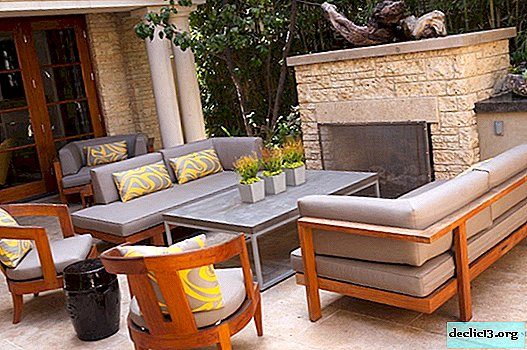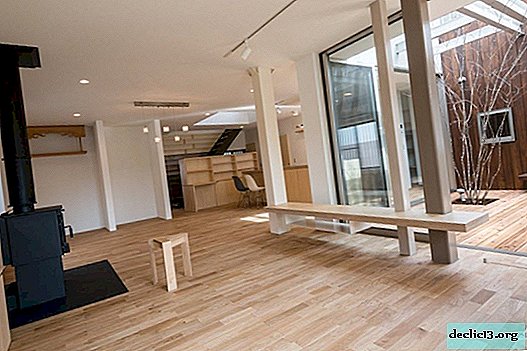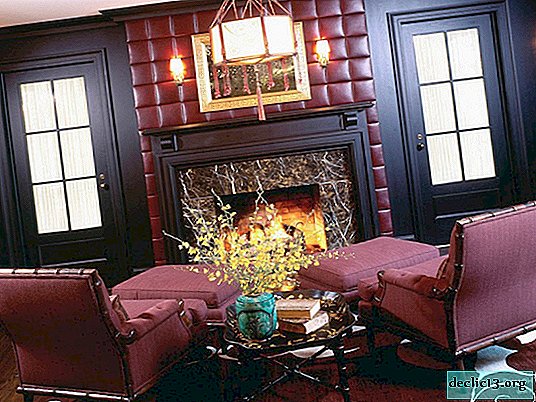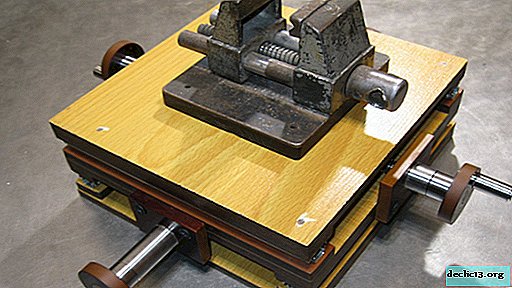Options for furniture facades for cabinets, selection rules
Furniture filling of residential or working premises is carried out with the aim of not only making them more practical, but also constructively completing a certain design concept of the room. Perhaps the largest and most noticeable elements of the interior are furniture facades for cabinets, the choice of which requires a special approach to the issue of workmanship and appearance.
Kinds
The variety of products on the furniture market is striking in its scale, and the number of technological solutions and the assortment of materials from which the filling elements are made will satisfy the needs of any designer. The main criteria that determine how best to choose facades for cabinets are the system of its work and what it is made of.
By way of opening
By the method of opening a closet or dressing room, the following types of their facades are distinguished:
- swinging;
- compartment;
- harmonic;
- shutters;
- folding.
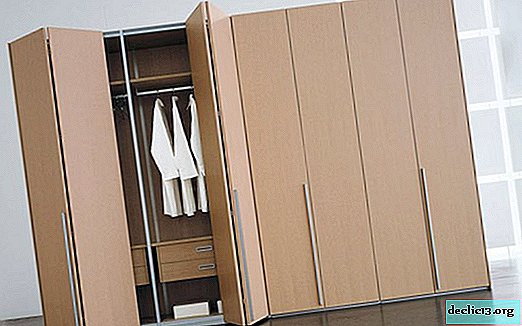 Harmonic
Harmonic Shutters
Shutters Swing
Swing Hinged
Hinged Coupe
CoupeSwing
Furniture swinging facades for cabinets are distinguished by the fact that access to the cabinet is provided by opening the doors to the outside, which is not always convenient in an insufficiently spacious room. They are often used in cabinets built into a niche, where the use of other types of doors is almost impossible due to design features. The hinged facade is installed on the hinges, and the inner surface of the doors is equipped with accessories in the form of hooks, small bars, on which accessories are hung. Such doors are reliable due to the simplicity of design, and they are safer for small children than sliding louvered facades. Hinged doors in cabinets of a classical style with decor elements, for example, panels, are popular. In addition, this type of design is cheaper, so it is very popular among designers. Doors are equipped with closers, which increases the safety of children using the product.




Coupe
Coupe doors are an ideal solution in the conditions of small-sized premises, as it does not require additional space for opening. Sliding louvered facades can be equipped with mirrors from the outside, however inside their surface it is difficult to equip with additional details due to the close proximity of their planes to each other, as well as the difficulty of access to accessories. The complexity of the design is sometimes its minus, and savings on the quality of the body kit affects its work and durability. In the manufacture of coupe-type doors, the technique of combining materials is often used, which makes the product more expensive, but more elegant and versatile. The curvature of the walls of the built-in cabinet is better hidden by the design of the compartment, which has a wider range of adjustments than swing doors.
The sliding facade requires careful maintenance of the movable working parts. If you regularly monitor the rack and pinion mechanism along which the support rollers move, you can significantly extend the life of the entire facade.




Harmonic
Accordion doors are not yet popular among cabinet owners, but their low prevalence makes this type of facade unique and interesting in some design decisions. An underrated item sometimes surpasses other doors in quality and reliability. Due to the load distribution on the upper part of the structure, such doors will last longer than their competitors, and the variety of designs will solve the most complex problems in creating the interior. The principle of operation of the facade during access to the cabinet is to fold sections by moving the structure to the side. The smaller the size of the sections, the greater their number, and when open, the door takes up less space. Saving the space of the room is the main task of the accordion-type design. The price of this piece of furniture is at the level of other products of this purpose, it all depends on the materials of manufacture.




Shutters
Roller shutters, or furniture shutters, are also used in the manufacture of cabinet facades. This is a fairly rare, but reliable mechanism, convenient to use, taking up little space in a limited space. The problem of rolling shutters lies in a complex combination with most modern interiors. More often I use this type of facade in pantries or closets in an unpopular place in the house where guests rarely go.




Folding
Hinged doors on the cabinet apply to part of its facade. The design feature allows you to open the mechanism only up or down, which creates a large load on it, and the door with an open lower position takes up a lot of free space. The manufacture of the facade requires high-quality closers and strong hinges. The hinged down door is sometimes equipped with shelves for shoes, facilitating access to the required pair immediately when it is opened.




According to the material of manufacture
The quality and appearance of the facade is directly affected by the material used for its manufacture. Next, we will present data on the most common of them:
- wood is used for swing facades in classic interiors. Such material is environmentally friendly, looks noble and very reliable in operation. Wood in a sliding facade is used relatively rarely and requires the strength of fittings due to its weight;
- MDF facades for cabinets - the cheapest, most common material for the manufacture of the front side of furniture. It is very convenient to use because of its light weight, and their structure is to the taste of woodworking craftsmen. The downside in this case is the dubious environmental friendliness of the product treated with adhesives and resins. MDF boards serve as the basis for the manufacture of all types of facades, except for rolling;
- glass is used separately or in combination with other materials: wood, MDF, plastic, metal. Glass louvered facades, mostly matte, are relatively expensive, but they have not only an aesthetic purpose, but also a practical one. The transparency of the glass allows you to easily see the clothes inside the wardrobe, without even opening it;
- plastic is used in the manufacture of facade slabs suitable for modern interior styles. Plastic panels are part of some rolling doors. A cabinet with glossy facades is perfect for the hi-tech style;
- metal doors mainly act as roller shutters.
 Metal
Metal Plastic
Plastic Glassy
Glassy Wooden
Wooden MDF
MDFColors and decorating methods
Today, furniture manufacturers present an uncountable number of colors into which furniture can be painted. The color of the cabinet, as the largest filling element, directly affects the mood of the room. We offer you to consider the basic principles of color selection and some samples as examples:
- bright doors are ideally suited to children's rooms, and the decoration of the wardrobe of such a bedroom can consist of printing with cartoon characters, a combination of materials (glass-wood, glass-plastic);
- the neutral finish of light MDF or bamboo remains invisible, which is perfect for the parent bedroom;
- mirrors should be used carefully, since a large number of them can make the room uncomfortable;
- the contrast of a dark cabinet with light walls is very appropriate in spacious rooms where it will not look like a heap. Pastel walls with a dark brown wardrobe or white walls with a chocolate-colored façade go well.
Dressing for the cabinet emphasizes the individuality of its owner, and is also able to make changes to the environment of the room. Here are the basic techniques for decorating facades:
- classical interiors, or colonial-style rooms, louvered facades with decoupage - patterned surface design are perfect. The technique is used more often with respect to wooden surfaces with convex details. Paneled doors are excellent for this purpose;
- prints applied to the facade will fit themed interiors, or loft-style rooms;
- You can decorate the cabinet with wallpaper. The method is quite budgetary, but with special care gives impressive results;
- glass elements, as mentioned earlier, not only create a specific product design, but also play a practical role, providing a partial overview of things without opening doors;
- plastic panels are coated with a film to give the surface a gloss finish.
The choice of the facade of the dressing room or other part of the furniture filling depends solely on the preferences and tastes of their users, however, it is always worth remembering that the quality of materials, their color and reliability directly affect the health, mood and safety of the homeowners.
Video
Photo
























